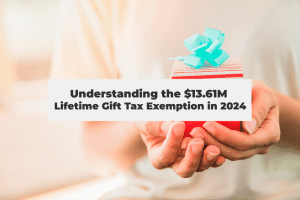The world of non-profits is a noble one, focusing on causes, communities, and change. Yet, behind the scenes, they also grapple with the unique challenges of tax compliance. Two forms, in particular, stand out: Form 1023 and Form 990.
The Role of Form 1023
Form 1023 serves as the recognition form for tax-exempt organizations. When a non-profit wishes to be recognized as a tax-exempt entity under Section 501(c)(3) of the Internal Revenue Code, this form becomes indispensable.
Why it’s Crucial: Acquiring 501(c)(3) status allows donors to make tax-deductible contributions. For many organizations, this status can significantly boost fundraising capabilities.
Potential mistakes: A wrongly filled or incomplete form can delay or even deny tax-exempt status. Detailed and accurate financial data, alongside a comprehensive description of the organization’s activities, are paramount.
Understanding Form 990
Form 990, the “Return of Organization Exempt From Income Tax,” acts as a yearly reporting return that federally tax-exempt organizations must file with the IRS. This form provides a detailed overview of the organization’s annual activities, governance processes, and financials.
Why it’s Essential: It maintains the organization’s tax-exempt status and keeps the public informed about the non-profit’s mission, programs, and finances.
Navigational Tips: It’s essential to maintain accurate financial records throughout the year to simplify the Form 990 filing process. Be aware of the different variants, like Form 990-N, 990-EZ, or 990-PF, and choose the right one for your organization.
Form 990 Variants and Their Requirements
Form 990-N (e-Postcard):
Who’s it for? This is for tax-exempt organizations with gross receipts of $50,000 or less per year.
Requirements:
The organization’s legal name and any other names used.
Taxpayer Identification Number (TIN).
Website address, if applicable.
Mailing address and principal officer’s name.
Gross receipts for the tax year.
A statement confirming the organization’s assets are $500,000 or less.
Information about termination or liquidation of the organization.
Note: The form must be filed electronically, and there’s no paper form.
Form 990-EZ:
Who’s it for? This shortened version of Form 990 is for organizations with gross receipts less than $200,000 and total assets less than $500,000 at the end of the year.
Requirements:
Revenue, expenses, and changes in net assets.
Balance sheet information.
Information about the organization’s leadership.
Details on specific types of revenue, like gifts, grants, or membership fees.
Information on program service activities and related expenses.
Details on specific functional expenses like salaries, benefits, and travel.
Form 990-PF:
Who’s it for? Specifically designed for private foundations, regardless of their income.
Requirements:
Details about contributors.
Revenue and expense data.
Balance sheets.
Detailed grant information, including grant recipients and amounts.
Information about foundation managers and their compensation.
Investments, including securities, real estate, and other assets.
Any undertakings to act as a non-operating foundation, if applicable.
Standard Form 990:
It’s meant for tax-exempt organizations, non-exempt charitable trusts, and section 527 political organizations with gross receipts greater than $200,000 or assets greater than $500,000.
Closing Thoughts
While the causes championed by non-profits are undeniably invaluable, maintaining tax compliance is a non-negotiable component of their operations. Utilizing specialized accounting and tax services can help non-profits remain compliant, ensuring they focus on their core mission without IRS-related disruptions.
Schedule a free tax consultation to get started



